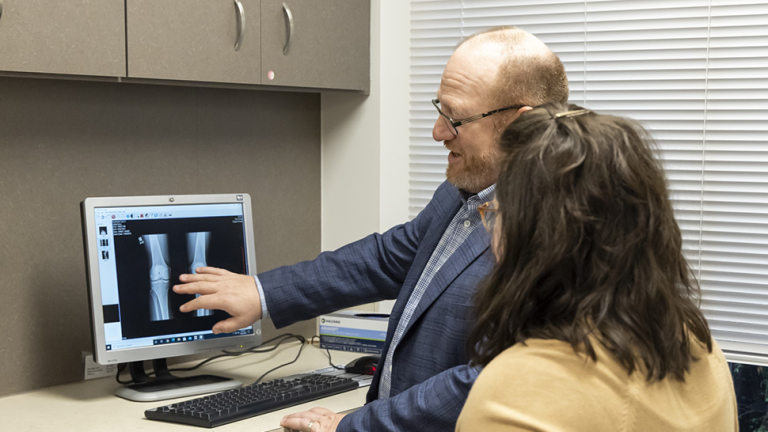If joint pain is keeping you from doing the things you love—walking your dog, playing with your grandkids or simply getting a good night’s sleep—it may be time to consider joint replacement surgery.
Dr. Matthew Hummel, an Orthopaedic Surgeon at OrthoCincy Orthopaedics & Sports Medicine, understands that surgery can feel intimidating. But he wants patients to know that joint replacement can be life-changing.
“Joint replacement surgery can give you a new lease on life,” says Dr. Hummel. “Many people cope with their symptoms for years before deciding to have surgery. Ironically, these are often the same people who say they wish they hadn’t waited so long.”
What Is Joint Replacement?
Joint replacement surgery involves removing a damaged joint and replacing it with an artificial one made of metal, plastic or ceramic. These artificial joints are designed to mimic the movement of a healthy joint, helping patients regain mobility and reduce pain.
Most people who undergo joint replacement suffer from osteoarthritis—a condition that breaks down the cartilage and tissues in the joints. Symptoms can include:
- Joint instability
- Crackling, popping or locking
- Stiffness
- Pain or swelling
- Reduced range of motion
The most common joint replacements are for knees and hips and the average age for surgery in the U.S. is around 65.
When to Consider Surgery
Joint replacement may be a good option if your symptoms interfere with daily life. If pain keeps you up at night or prevents you from enjoying activities, it’s time to talk to a specialist.
“Surgery usually isn’t the first treatment option,” Dr. Hummel explains. “Your doctor may recommend medications or pain-relief injections first. But if symptoms persist, joint replacement may be the next step.”
A physical exam and X-rays can help determine the best course of action.
Advancements That Improve Outcomes
Joint replacement surgery continues to evolve, offering better outcomes and faster recoveries. Some of the latest advancements include:
- Improved pain control strategies.
- Evidence-based exercise plans to restore motion.
- Nutritional guidance to support healing.
- Robotic systems for enhanced surgical precision.
- Minimally invasive techniques that reduce pain and shorten recovery time.
Many patients are now able to return home the same day as their surgery.
Setting Yourself Up for Success
Dr. Hummel offers three key tips for a successful joint replacement:
- Choose a trusted surgeon. Ask your Primary Care doctor for a referral or talk to friends about their experiences.
- Optimize your health before surgery. Losing weight, quitting smoking and following your doctor’s advice can reduce complications and speed up healing.
- Commit to recovery. Physical therapy is essential. A positive attitude and strong communication with your care team can make a big difference.
Take the First Step Toward Relief
Joint pain doesn’t have to be a lifelong struggle. If you’re ready to explore your options, talk to an orthopaedic specialist and learn more about how joint replacement can help you get back to the life you love.
Visit the St. Elizabeth Joint Surgery page to learn more and take the first step toward healing.

